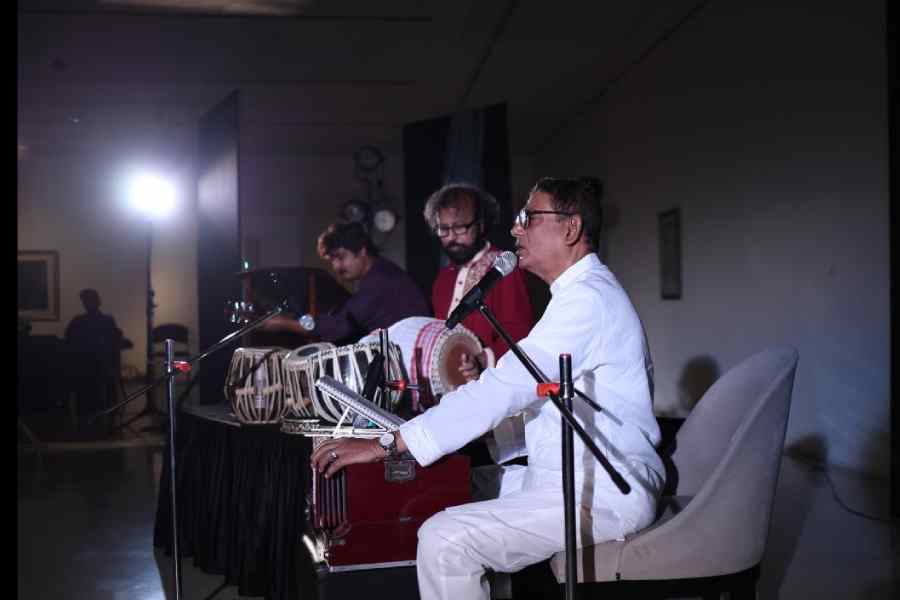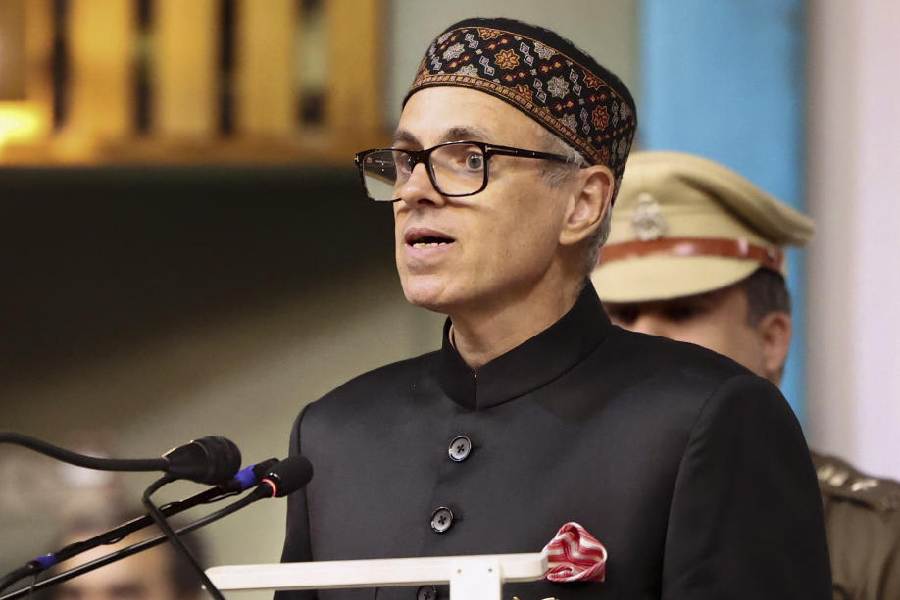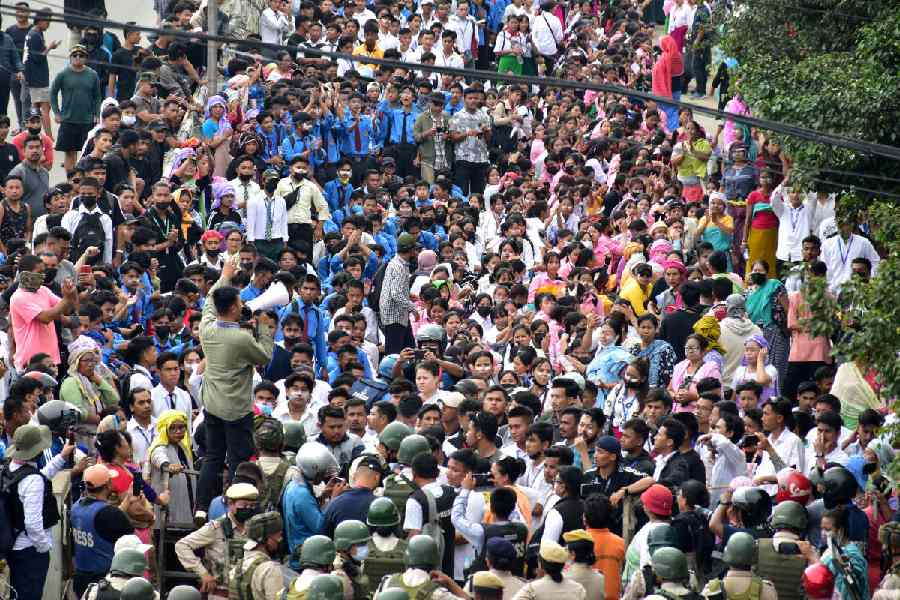The Kolkata Centre for Creativity recently organised Shrabaner Dharar Moto to celebrate the legacy of Rabindranath Tagore and the songs written by the poet that capture the scenic and the emotional intricacies of the monsoon. These songs were performed by Fahim Hossain Chowdhury, the legendary Rabindrasangeet artist from Bangladesh, at the amphitheatre of KCC. He conveyed the themes and the emotions of the songs poignantly. Chowdhury is the president of Dakshini Rabindra Sangeetangon and has served as the cultural secretary of the Dhaka University Alumni Association.
Chowdhury selected songs from Tagore’s Gitanjali, primarily from the “Prakiti Parjay” and the “Borsha Upa-Parjay”. He chose to open with “Abar eseche asharh aakash chheye”, clearly because it is based on Raga Malhar, which is quintessentially associated with compositions on the theme of monsoon. Among the other songs sung by Chowdhury, “Amar din phuralo”, “Mono mor meghero sangi” and “Emono dine taare bolajaay” were noteworthy. Of these, Chowdhury’s rendition of “Amar din phuralo” was especially moving, evoking the emotions encapsulated in Tagore’s portrayal of nature. While rendering “Emono dine taare bolajaay”, Chowdhury had to stop mid-song as his voice was strained. However, he was cheered on by the audience for his meticulous renditions.
Chowdhury chose “Sei bhalo, sei bhalo” as his last song for the evening. While this song is from the “Prem Parjay” and not the “Prakriti Parjay”, it was exactly what the audience needed as the final song of the evening.
Through its celebration of Rabindranath Tagore, this programme marked yet another example of the cultural synergy between India and Bangladesh.










